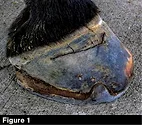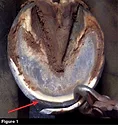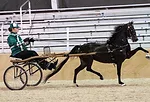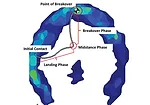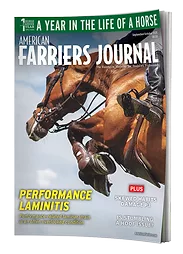Advertise Follow Us
American Farriers Journal

View Archived Issues
December 2021
American Farriers Journal is the “hands-on” magazine for professional farriers, equine veterinarians and horse care product and service buyers.
-
Table Of Contents
Table Of Contents
U.S. Tax Proposal Could Ensnare Farriers
Solid organization and recordkeeping are vital for IRS complianceRead MoreCan I Show My Horse Tomorrow?
Clients must realize that issues affecting their show horses may not be a simple case of “fixing it”Read MoreCasting Method May Benefit Transitioning Horse to Barefoot
Carelessly transitioning a performance horse from shod to barefoot may negatively affect its footcareRead MoreHow to Prepare for a Successful Career Shoeing Gaited Show Horses
What you need to know before ever picking up a footRead More2022 Mail-In Deadline Coming Up
Assess and improve your forging skills in the 2022 International Hoof-Care Summit Mail-In by making this gaited horseshoeRead MoreWhat is Mediolateral Balance in Farriery?
Scientific research offers insights in the context of everyday hoof care and shoeingRead MoreHospital Plate Options Provide Horse Hoof Wound Protection
Intermediate and skilled farriers have traditional and creative applications to considerRead MoreThe Critical Importance of the Horse’s Stifle and Hock in Movement
The hind limb reciprocating system coordinates motion and economizes the required effortRead MoreResearch Journal: December 2021
The information, ideas and opinions expressed are those of the author and do not necessarily represent those of the United States Department of Agriculture.Read More -
Featured Articles
Featured Articles
Can I Show My Horse Tomorrow?
Clients must realize that issues affecting their show horses may not be a simple case of “fixing it”Read MoreWhat is Mediolateral Balance in Farriery?
Scientific research offers insights in the context of everyday hoof care and shoeingRead MoreHospital Plate Options Provide Horse Hoof Wound Protection
Intermediate and skilled farriers have traditional and creative applications to considerRead More - Digital Edition
-
Online Extras
Online Extras



